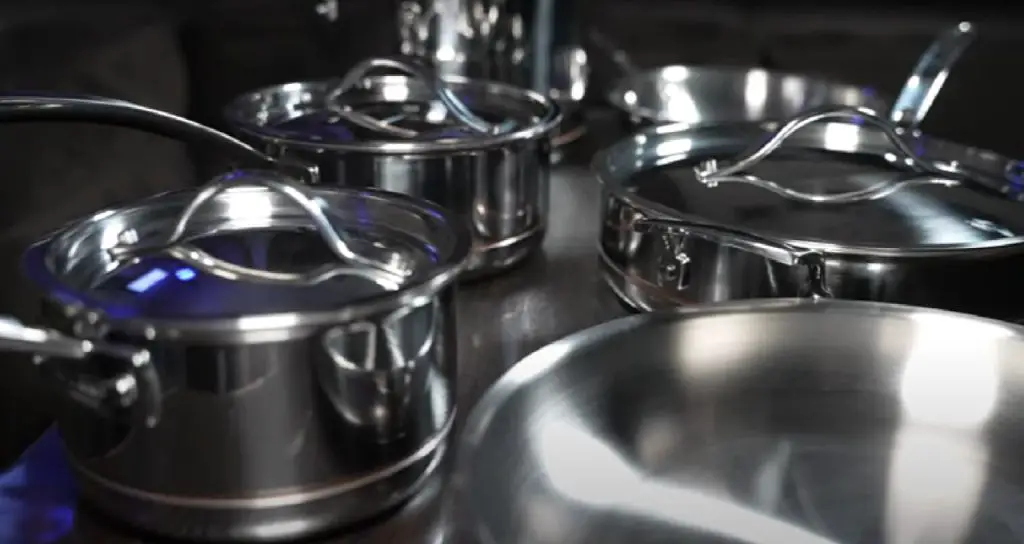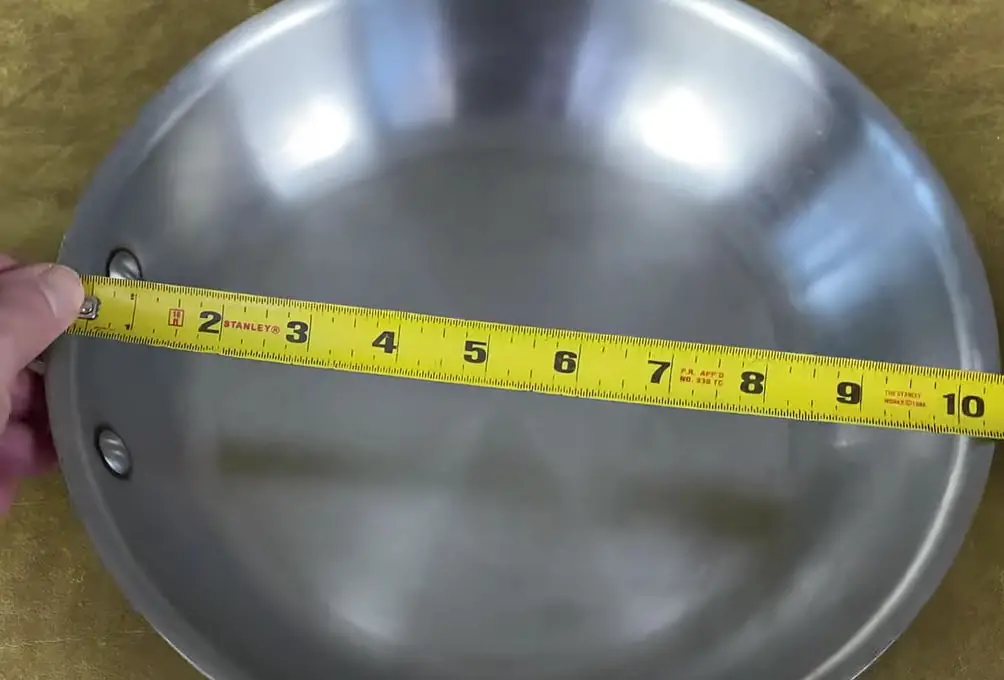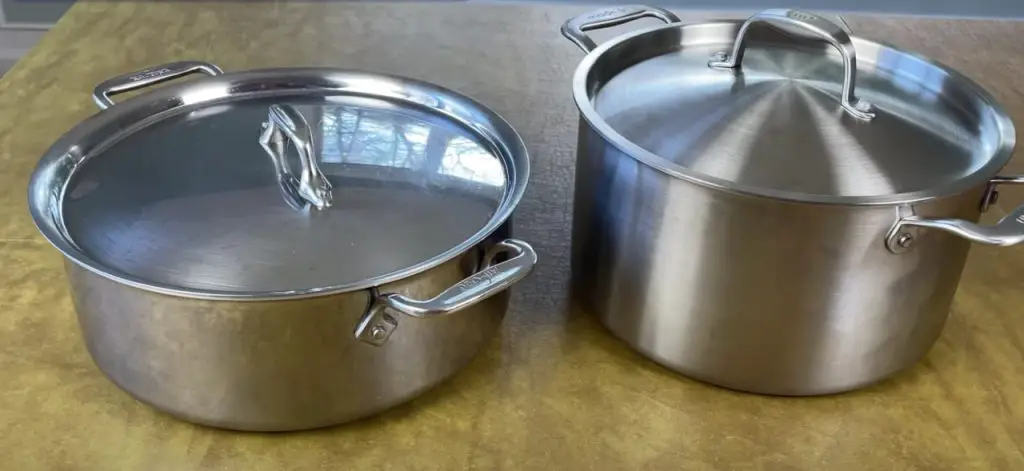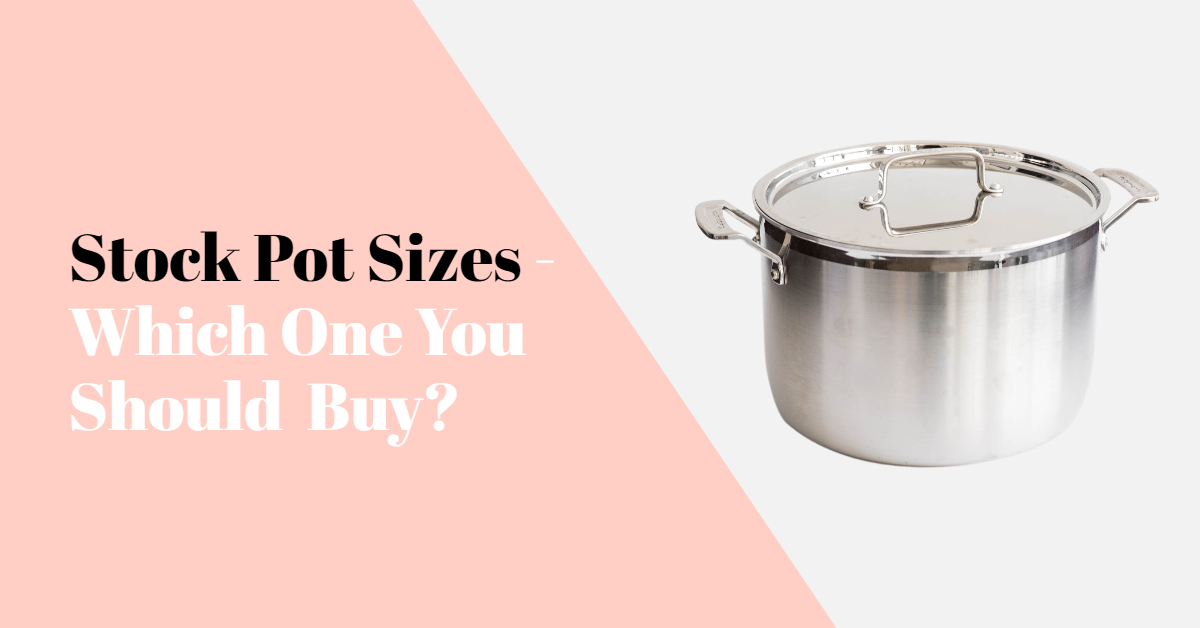What Stock Pot sizes do I need? It depends on what you’ll be using it for. If you’re looking to make large batches of soup or stew, you’ll need a bigger pot (like 24 and 32 quarts). But a small pot (like five or six quarts) will do just fine if you cook for yourself or a small group. Ultimately, it’s up to you to decide what size pot is best for your needs.
What Stock Pot Sizes Do I Need? What is the most common-size?
An 8-Quart stock pot is the most common size and is perfect for home kitchen use. This size is large enough to make soups and stews for a family, boil one to two boxes of pasta, or make homemade stock from all your scraps – but not so large that it is difficult to store or clean.

Why is it better to use a narrow stock pot?
Narrow stock pots are ideal for cooking soups and stews because they allow the food to cook evenly and prevent it from burning. Additionally, narrow stock pots are easier to clean than wide pots because there is less surface area for food to stick to.
Are bigger pots better?
Bigger stockpots have their advantages. They can hold more food, which is great for big families or groups. They also heat up evenly, so you don’t have to worry about hotspots. And they’re perfect for making large batches of food that can be frozen and eaten later.
What type of pot is best used for the stock? Why?
The best type of pot to use for stock is a heavy-bottomed pot. This is because a heavy-bottomed pot will distribute heat more evenly, preventing scorching and making it easier to achieve a consistent simmer.

How big is a 20-qt stock pot?
Top Diameter:11 5/8 Inches. Height:10 7/16 Inches. Capacity:20 qt.
You might be wondering how big it is. Twenty quarts is the equivalent of 5 gallons, so a 20-qt stock pot is large enough to hold 5 gallons of liquid. This should be plenty of space for most cooking needs. It is typically used for cooking large quantities of food.
What is the most versatile pot?
Stainless steel is the most versatile pot because it can be used for various tasks. It is durable, easy to clean, and can cook and store food. Additionally, stainless steel pots are often less expensive than other pots.
There are many reasons why stainless steel is the most versatile pot. Here are just a few:
- Stainless steel is durable and resistant to corrosion.
- It can be used on all types of stovetops, including induction cooktops.
- Stainless steel pots and pans are dishwasher-safe.
- They are also oven-safe, so you can use them for baking or roasting.
- Stainless steel pots and pans are relatively lightweight, making them easy to handle.
What is a 12-quart stock pot used for?
A 12-quart stock pot is perfect for when you need to make large quantities of food at once. It can be used to simmer bone broth, boil a family-sized amount of pasta, or even steam crab legs. Deep stockpots like this one are also great for sous vide cooking, which is a method of cooking food that involves sealing it in an airtight bag and then submerging it in water that’s been heated to a very specific temperature.
You may also like: What Size Caldero Do I Need?
What pot is best for soup?
When making soup, one of the most important tools you’ll need is a good stock pot. But with all the different options, how do you know which is best for you?
Here are a few things to keep in mind when choosing a stock pot for soup:
- The size of the pot. You’ll want to choose a big pot to accommodate the amount of soup you typically make.
- The material. Some materials, like aluminum, heat up quickly but can also cool down just as quickly. This is fine if you’re making a small soup, but if you’re making a larger batch, you might want to consider a material like stainless steel that takes longer to heat up but will maintain its heat longer.
- The price. Stock pots can range in price from budget-friendly options to more expensive ones. It depends on your needs and budget as to which one is best for you.
Keep these things in mind, and you’ll be sure to find the perfect stock pot for your soup-making needs!
How do you not burn the bottom of a stock pot?
Here are some tips for avoiding burning the bottom of your stock pot:
- Use a thicker pot: A thicker pot will conduct heat more evenly, preventing hot spots that can lead to burning.
- Don’t leave the pot unattended: If you have to step away from the stove, turn the heat down to prevent accidental burning.
- Stir regularly: Stirring helps distribute the heat more evenly and prevents food from sticking and burning to the pot.
- Add liquid as needed: If the contents of the pot start to look dry, add more liquid to prevent burning.
What is the difference between a stock pot and a soup pot?
The main difference between a stock pot and a soup pot is that a stock pot is typically used for cooking food in larger quantities, while a soup pot is more meant for smaller batches. A stock pot is also taller and has straighter sides, while a soup pot is shorter with sloped sides. This difference in shape is meant to help prevent evaporation in a stock pot since it has a larger surface area.

What should I look for when buying a pot?
When you’re shopping for a pot, there are a few things you’ll want to keep in mind.
- Think about durability. You want a pot that will last, so make sure it’s made of high-quality materials.
- Consider reactivity. Some materials can react with food, so you’ll want to choose a pot that won’t affect the taste of your dishes.
- Think about heat conductivity. You want a pot that will heat evenly, so it’s important to find one that conducts heat well.
- Consider the price. You only want to spend what you have to, but it’s important to find a durable pot.
- Think about maintenance. Some pots are easy to clean and care for, while others require more work. Choose the one that’s right for you based on your needs and lifestyle.
Which pots last a lifetime?
Pots made out of stainless steel are the ones that last a lifetime. Why is this? Stainless steel is a material known for its durability and strength, meaning that it can withstand being used regularly without sustaining any damage. It is also resistant to rust and corrosion, meaning that your pot will continue to look shiny and new even after years of use.
Stock Pot Sizes Comparison chart
| Size | Serves | Ideal for… |
| 6-quart | 12 | Soup, chili, stew, curry, pasta |
| 8-quart | 16 | Poultry stock and vegetable stock |
| 12-quart | 24 | Beef, pork, game stock, steamed lobster, corn on the cob |
| 16-quart | 32 | Canning |
| 20-quart | 40 | Commercial kitchens, brewing beer |
| 24-quart | 48 | Commercial kitchens |
| 32-quart | 64 | Commercial kitchens |
| 40-quart | 80 | Commercial kitchens |
Weight of Stock Pot
| Stock Pot | Weight (pot) | Total Weight (pot + water) |
| 6-Quart | 5 lb. | 17.5 lb. |
| 8-Quart | 6.4 lb. | 23 lb. |
| 12-Quart | 11.3 lb. | 36.3 lb. |
| 16-Quart | 8.5 lb. | 41.8 lb. |
Conclusion
We hope our article was useful for you, we are always happy to share our experience with. We wish you safe cooking!

I am Linda. A housewife and a writer, and also the founder of this site. I love cooking and collecting cookware sets. I’ve been blogging since 2020, and in this blog, you can find cookware-related problems and solutions, cookware reviews, safe cookware sets, and more.
I have put a lot of effort into gathering here the experience and knowledge that I have, and I want to help every reader.

